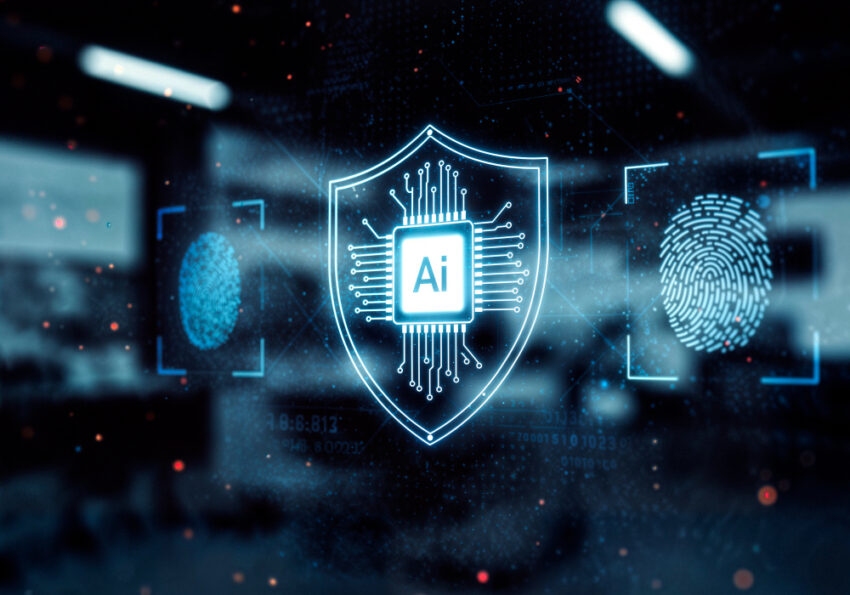In a rapidly evolving world where security, efficiency and intelligence drive innovation, video surveillance is no longer just about recording footage – it’s about interpreting data in real time. Traditional surveillance systems once relied on human operators to monitor endless video feeds, which often led to fatigue, missed events, or delayed responses. But with the rise of artificial intelligence, a new era has begun – where technology enhances human capabilities and brings unprecedented precision to security management.
The transformation of video surveillance through AI has reshaped the way organizations approach security, risk management and operational efficiency. From detecting suspicious behavior to automating alerts, AI enables systems to “think” and “react” intelligently, reducing reliance on manual inspection. This development is a major step towards a smarter, safer and more adaptive surveillance environment for both the public and private sectors.
The Evolution of Smart Surveillance Systems
Security has always been the cornerstone of modern infrastructure be it in offices, retail stores, factories or public spaces. Earlier surveillance systems were reactive; He recorded the events but lacked the intelligence to stop them. The introduction of advanced analytics and machine learning has transformed these systems from passive monitors to active defenders.
Today’s surveillance systems leverage intelligent algorithms to identify activity patterns, analyze human behavior, and differentiate between normal and abnormal activities. This capability enables immediate alerts for threats such as unauthorized access, unattended objects or perimeter breaches.
In environments such as airports, malls or corporate facilities, such systems significantly reduce response times and increase accuracy. With the integration of AI-powered video surveillance, cameras can now recognize faces, read vehicle license plates and even detect emotional signals, helping security teams act faster and more effectively. The ability to process large amounts of data in real time means organizations can prevent issues rather than record them.
Key Benefits of AI-Driven Surveillance Technology
AI-powered monitoring offers benefits that go beyond traditional monitoring. It’s not just about upgrading cameras, it’s about upgrading intelligence across the entire ecosystem of devices, software and workflows. Some of the key benefits include:
- Real-Time Threat Detection: AI identifies anomalies instantly, reducing delays and preventing security breaches before they escalate.
- Cost Efficiency: By automating monitoring tasks, companies can reduce human workload and operational expenses.
- Enhanced Accuracy: AI eliminates human error, ensuring that security alerts are more precise and reliable.
- Data-Driven Insights: Beyond safety, analytics provide insights into crowd flow, employee productivity, and customer behavior.
- Scalability: AI systems can easily adapt to expanding facilities or new security requirements without major hardware upgrades.
These benefits highlight that AI surveillance is not just a technological trend but a necessary development for the modern world. This enables better decision making, proactive security and long-term sustainability for businesses and communities.
AI in Action: Beyond Traditional Security
The impact of AI in surveillance extends beyond traditional security roles. Businesses now use it to optimize operations and improve user experiences. In retail, AI cameras help track customer behavior and store traffic, guiding product placement and marketing strategies. In manufacturing, AI-powered monitoring ensures compliance with safety standards, detecting hazards before they cause accidents.
Urban planners and smart city developers also rely on AI-enabled cameras for traffic management, crowd control, and environmental monitoring. This data not only enhances security but also contributes to urban efficiency and sustainability. By combining AI with IoT and cloud computing, entire networks of devices can seamlessly share and analyze data, leading to safer and more connected communities. Furthermore, AI systems are constantly learning.
Over time, they become more accurate and adaptive, understanding context and reducing false alerts. This self-correcting capability ensures that monitoring remains effective even as conditions change or new threats emerge.
The Role of Modern Surveillance Providers
As organizations look to modernize their security infrastructure, the demand for electronic surveillance services has increased. These providers don’t just install cameras – they provide integrated systems combining AI, analytics, and automation. From corporate buildings and manufacturing plants to educational institutions and residential complexes, professional surveillance companies design customized solutions that meet specific needs.
Such services often include system design, hardware installation, data storage, remote monitoring, and predictive analytics. By partnering with experts, businesses can ensure optimal system performance, data privacy, and compliance with regulatory standards. The right provider can transform a basic monitoring setup into a comprehensive security ecosystem powered by intelligence and foresight.
Challenges and the Road Ahead
While AI brings remarkable advancements, it also raises questions about data privacy, ethical use, and cybersecurity. The collection and analysis of visual data must be governed by strict security policies to ensure user safety and regulatory compliance. Responsible AI use includes transparency, consent, and adherence to privacy laws to build public trust.
As technology evolves, integration between AI, IoT, and cloud platforms will become more seamless. Future systems will not only detect incidents but also predict them, using historical data to anticipate potential security risks. The combination of automation, smart algorithms, and human oversight will define the next era of surveillance, one that is adaptive, secure, and deeply intelligent.
Conclusion
AI has revolutionized video surveillance, shifting it from reactive to proactive security. This enables systems to think, learn and act with precision, making workplaces, cities and public spaces safer than ever. By combining advanced analytics, automation, and real-time insights, organizations can transform the way they view and manage security.
As adoption continues to grow, AI monitoring will become an integral part of everyday infrastructure not just a tool for security but a driver of smarter, safer environments. With innovation at its core, the future of video surveillance is not only intelligent but also transformative.







